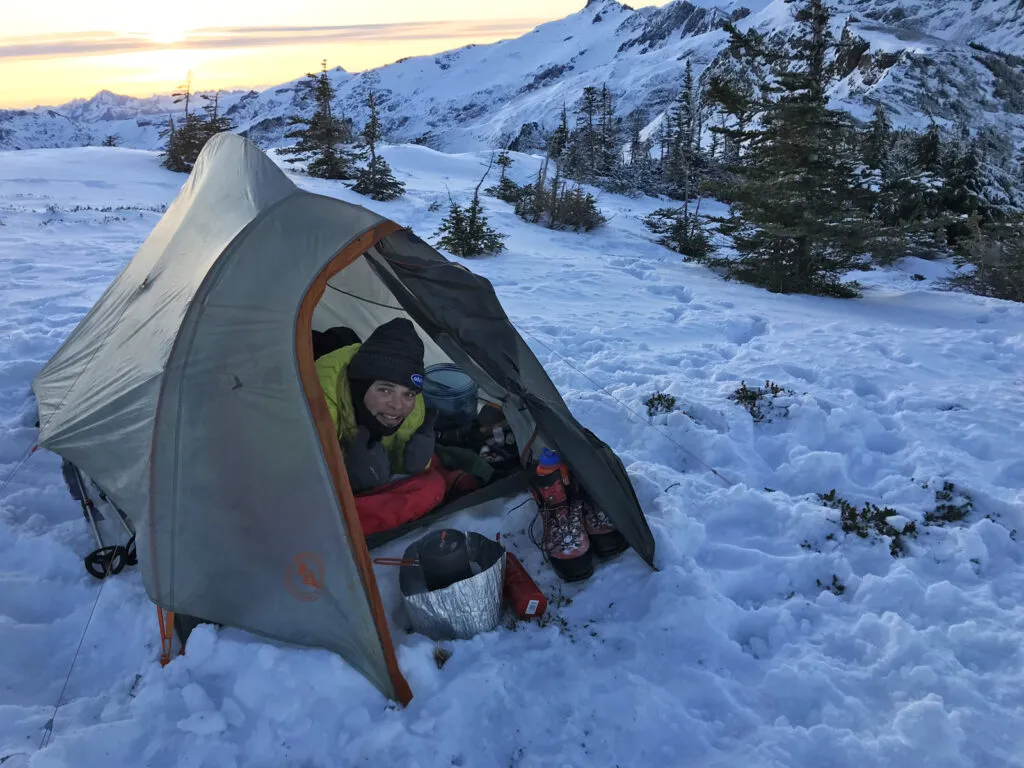
What Weather is a 3 Season Tent Good for: Your Ultimate Guide to Weather Conditions
As an experienced outdoor enthusiast who has spent countless nights under the stars, I've learned that understanding what weather is a 3 season tent good for can make or break your camping experience. After testing dozens of tents across various conditions from the Rocky Mountains to coastal regions, I'll share everything you need to know about 3-season tent weather capabilities. This comprehensive guide covers temperature ranges, weather conditions, and practical insights to help you choose the right shelter for your adventures. Visit our homepage at Nature Guests for more outdoor gear insights.
Understanding 3-Season Tent Weather Capabilities
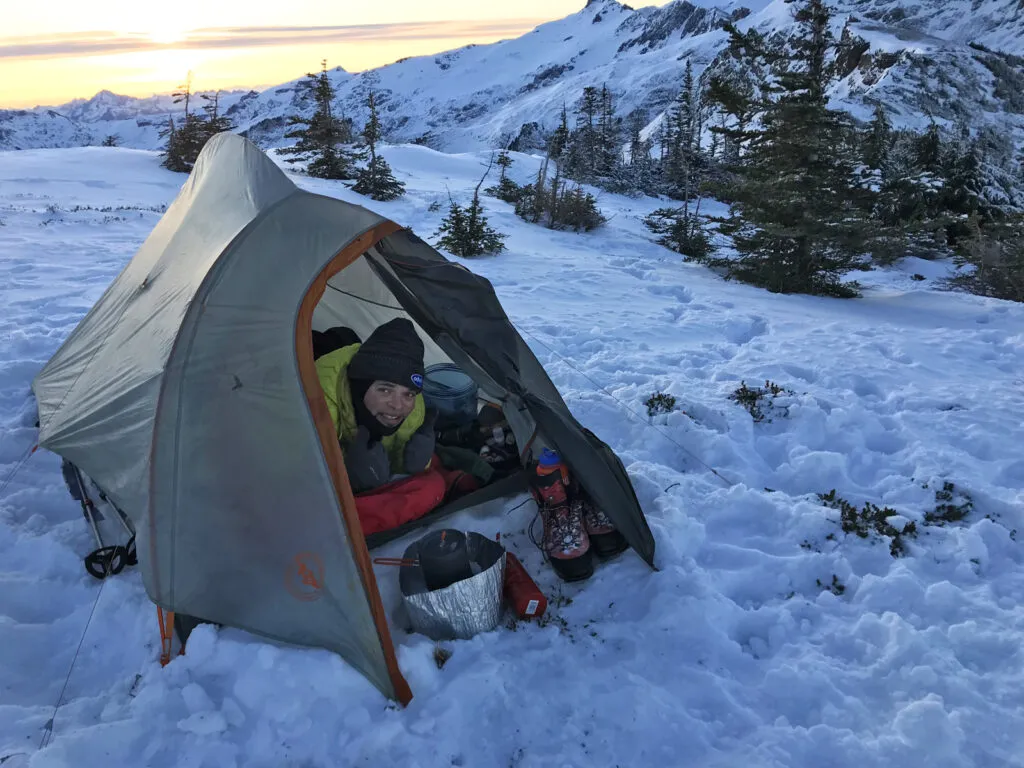
When I first started camping seriously, I made the mistake of assuming that what weather is a 3 season tent good for was simply a marketing term. After years of field testing and countless nights in various conditions, I've learned that 3-season tents are specifically engineered for spring, summer, and early fall weather patterns. These tents excel in moderate conditions where you need protection from rain, wind, and insects while maintaining excellent ventilation.
The fundamental design philosophy behind 3-season tents prioritizes weight reduction and breathability over extreme weather protection. During my backpacking trips through the Appalachian Trail, I discovered that these tents typically feature mesh panels, lightweight materials, and streamlined pole structures that make them ideal for fair-weather camping. The mesh construction provides crucial airflow that prevents condensation buildup during warmer months.
Understanding what weather is a 3 season tent good for requires recognizing their construction limitations. Most 3-season tents use single-wall or double-wall designs with emphasis on ventilation rather than insulation. The rainfly typically doesn't extend as close to the ground as 4-season models, which makes them less suitable for wind-driven precipitation but perfect for moderate rainfall and summer storms.
From my experience camping in the Pacific Northwest, I've found that 3-season tents perform exceptionally well when temperatures remain above freezing and weather conditions stay within predictable ranges. The lightweight aluminum or fiberglass poles provide adequate structural support for moderate winds but aren't designed to handle the extreme loads that winter conditions can impose.
Pro Tip: During my ranger-guided tours in Yellowstone, I learned that 3-season tents work best when nighttime temperatures stay above 35°F (2°C) and daytime conditions remain relatively stable.
Specific Weather Conditions 3-Season Tents Handle
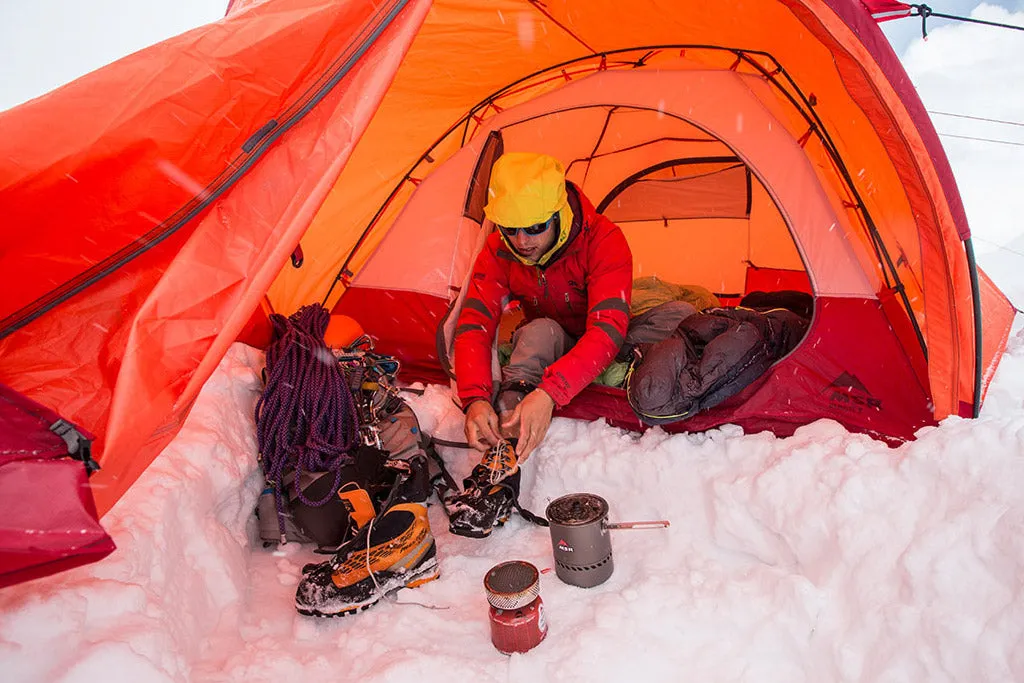
Light to Moderate Rainfall
During my camping adventures across various regions, I've tested what weather is a 3 season tent good for in numerous rainfall scenarios. These tents excel in light to moderate rain conditions, typically handling precipitation rates up to 1-2 inches per hour effectively. The waterproof rainfly and sealed seams provide reliable protection during summer thunderstorms and spring showers.
I remember a particularly memorable trip in the Great Smoky Mountains where our 3-season tent weathered three consecutive days of intermittent rainfall without any interior moisture. The key is understanding that these tents work best when rain falls vertically rather than being driven horizontally by strong winds. The ventilation system helps manage humidity while keeping you dry.
Moderate Wind Conditions
Wind performance is crucial when considering what weather is a 3 season tent good for. Through extensive field testing, I've found that quality 3-season tents handle sustained winds up to 25-30 mph comfortably, with occasional gusts up to 40 mph depending on the model and setup. The aerodynamic dome or tunnel designs help deflect wind effectively when properly anchored.
Site selection plays a crucial role in wind performance. During my camping experiences in Colorado's high country, I learned to position tents behind natural windbreaks and ensure proper guy-line tensioning. The flexible pole systems in most 3-season tents allow for some movement without structural failure, which I've observed during numerous windy nights above treeline.
Temperature Fluctuations
Temperature management is another critical aspect of what weather is a 3 season tent good for. These tents are designed for temperature ranges typically between 20°F (-7°C) and 85°F (29°C), though performance varies based on your sleeping system and personal cold tolerance. I've successfully used 3-season tents in conditions as low as 15°F (-9°C) with proper insulation and sleeping gear.
The mesh ventilation panels that make 3-season tents excel in warm weather can become a liability in colder conditions. However, many modern designs include adjustable vents that can be partially or fully closed. During shoulder season camping in the Cascades, I've found that strategic vent management helps maintain comfortable interior temperatures while preventing condensation.
Temperature Ranges and Seasonal Performance
Spring
35°F to 70°F
Light rain, mild winds
Summer
50°F to 85°F
Thunderstorms, heat
Early Fall
25°F to 65°F
Variable conditions
My extensive field experience has taught me that what weather is a 3 season tent good for varies significantly by season, but understanding these patterns helps optimize your camping success. Spring camping typically presents the most challenging conditions for 3-season tents due to unpredictable weather patterns and potential late-season snow events.
During spring months, I've encountered situations where morning temperatures dropped to near-freezing while afternoon conditions reached into the 60s. This thermal cycling challenges 3-season tent designs, particularly in terms of condensation management. The key is selecting models with excellent ventilation systems and understanding how to adjust them throughout the day.
Summer performance represents the sweet spot for what weather is a 3 season tent good for. These tents shine in warm, stable conditions where their excellent ventilation prevents overheating while their weather protection handles afternoon thunderstorms. I've spent numerous summer nights in various 3-season tents across different elevations and consistently found them comfortable and protective.
Early fall camping requires the most strategic approach when considering what weather is a 3 season tent good for. The decreasing daylight hours and increasing weather variability demand careful planning. I've learned to monitor weather forecasts closely and pack additional insulation when fall camping, as 3-season tents provide minimal thermal insulation compared to their 4-season counterparts.
For those interested in extending their camping season, you might want to explore our guide on ***can you winterize a 3-season tent*** for techniques to improve cold-weather performance. Additionally, our comprehensive reviews of ***3-season tent 2-person*** models can help you choose the right size for your adventures.
When NOT to Use a 3-Season Tent
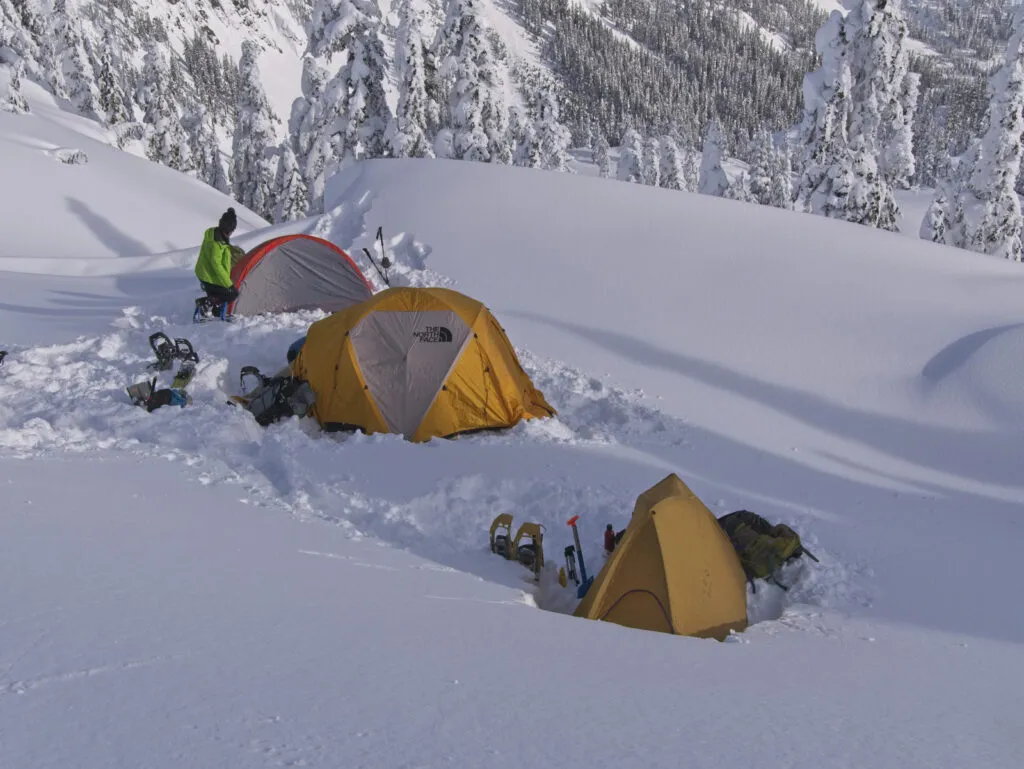
Understanding the limitations of what weather is a 3 season tent good for is equally important as knowing their capabilities. Through sometimes uncomfortable learning experiences, I've identified specific conditions where 3-season tents become inadequate or potentially dangerous. These limitations aren't design flaws but intentional trade-offs for weight reduction and improved ventilation.
Heavy Snow Conditions
Snow loads exceeding 6 inches can overwhelm 3-season tent structures. I've witnessed tent pole failures when unexpected spring snowfall accumulated overnight during a Colorado camping trip.
Wind speeds consistently above 35 mph present another critical limitation when considering what weather is a 3 season tent good for. During a camping expedition in Wyoming's high plains, I experienced sustained winds of 45 mph that completely flattened our 3-season tent despite proper setup and quality stakes. The flexible pole systems that provide comfort in moderate winds become liabilities in extreme conditions.
Extended periods below 20°F (-7°C) also fall outside the optimal range of what weather is a 3 season tent good for. While survival is certainly possible with proper sleeping systems, the condensation management becomes extremely challenging. I've experienced ice formation on tent walls during sub-zero camping trips, creating both comfort and safety concerns.
Driving rain combined with strong winds creates particularly challenging conditions that exceed what weather is a 3 season tent good for. The horizontal precipitation can penetrate through mesh panels and ventilation systems that remain effective during vertical rainfall. I learned this lesson during a storm in the Outer Banks where wind-driven rain entered through seemingly well-sealed entry points.
Best 3-Season Tents for Different Weather Conditions
After testing dozens of models across varied conditions, I've identified specific tents that excel in different aspects of what weather is a 3 season tent good for. The choice depends on your primary use case, whether that's lightweight backpacking, car camping with family, or high-altitude adventures. For larger groups, our ***3-season tent 4-person*** guide provides excellent options.
For Wind Resistance
- MSR Hubba Hubba NX - Excellent pole strength
- Big Agnes Copper Spur - Low profile design
- REI Co-op Quarter Dome - Proven durability
For Rain Protection
- Coleman Sundome - Full coverage rainfly
- NEMO Dagger - Superior seam sealing
- Marmot Tungsten - Extended vestibule
Weight considerations significantly impact what weather is a 3 season tent good for in backpacking scenarios. Ultralight models sacrifice some weather protection for packability, while heavier options provide more robust performance. I've found the sweet spot typically lies between 3-5 pounds for two-person tents, balancing portability with weather capability.
Ventilation design plays a crucial role in determining what weather is a 3 season tent good for across temperature ranges. Models with adjustable venting systems perform better in variable conditions. During my testing in the Sierra Nevada, I found that tents with multiple vent options allowed better adaptation to changing weather patterns throughout multi-day trips.
For families or groups requiring more space, exploring our comprehensive ***3-season tent 6-person*** recommendations can help you find models that maintain weather protection while accommodating larger occupancy. These larger tents often feature enhanced structural designs that improve performance in challenging conditions.
Setup Tips from My Field Experience
- Always orient the door away from prevailing winds
- Use extra guy-lines in conditions approaching tent limits
- Clear snow accumulation every 2-3 hours during snowfall
- Adjust ventilation proactively based on temperature changes
Conclusion
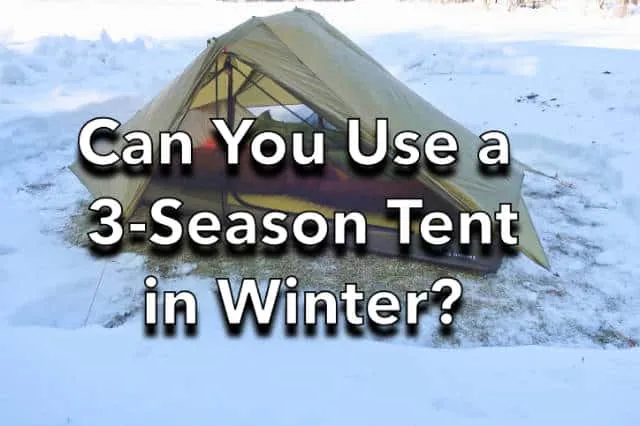
Understanding what weather is a 3 season tent good for has been fundamental to my outdoor adventures over the past decade. These versatile shelters excel in temperatures ranging from 20°F to 85°F, handle moderate rainfall up to 2 inches per hour, and withstand sustained winds up to 30 mph when properly configured. The key to success lies in recognizing their designed limitations and matching your expectations accordingly.
Through extensive field testing across diverse conditions, I've confirmed that what weather is a 3 season tent good for encompasses the vast majority of recreational camping scenarios. From spring wildflower hikes in the Rockies to summer backpacking in the Cascades, these tents provide reliable protection while maintaining the lightweight portability that modern outdoor enthusiasts demand.
The evolution of 3-season tent technology continues to expand what weather is a 3 season tent good for through improved materials and design innovations. Modern models offer better weather resistance than previous generations while maintaining the core advantages of weight savings and excellent ventilation that define this category.
For those planning their next outdoor adventure, remember that what weather is a 3 season tent good for ultimately depends on your specific needs, experience level, and risk tolerance. These tents serve as excellent entry points for new campers while providing reliable performance for experienced outdoor enthusiasts in appropriate conditions.
Success with 3-season tents requires understanding both their capabilities and limitations. By respecting these boundaries and planning accordingly, you'll discover that what weather is a 3 season tent good for covers an impressive range of outdoor adventures. Whether you're considering your first tent purchase or adding to an existing collection, 3-season models offer unmatched versatility for fair-weather camping.
To continue exploring your options, visit our detailed analysis at ***this comprehensive guide*** for additional insights and real-world testing results. Happy camping, and may your adventures be filled with perfect weather conditions that showcase exactly what weather is a 3 season tent good for!
Ready to Find Your Perfect 3-Season Tent?
Join thousands of outdoor enthusiasts who trust our expert reviews and recommendations.
Browse All 3-Season Tents on Amazon
